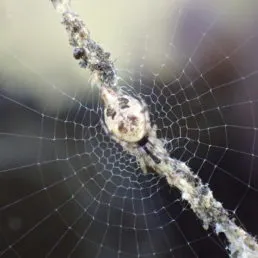What Spiders Resemble Tarantulas in Virginia
Virginia’s diverse ecosystems provide habitats for various spider species, some of which bear a striking resemblance to tarantulas. While true tarantulas are not native to Virginia, several other spiders share similar characteristics, leading to potential misidentification. Understanding the features of these tarantula-like spiders is crucial for accurate identification and appreciating the local arachnid fauna. These spiders, though often harmless, can cause concern due to their size and appearance, so learning to differentiate them is essential for anyone spending time outdoors in Virginia. This guide will help you distinguish between actual tarantulas and their look-alikes, promoting a better understanding and respect for these fascinating creatures.
Spider Identification Guide
Identifying spiders correctly involves careful observation of their physical attributes, behavior, and habitat. Using a systematic approach, you can differentiate between different species and understand their role in the ecosystem. Begin by noting the overall size, shape, and color of the spider. Then, observe the arrangement of their eyes, the pattern on their body, and the structure of their webs, if any. Comparing your observations with field guides or online resources can help you narrow down the possibilities and confirm the spider’s identity. Remember that spider identification requires patience and a keen eye for detail. This guide provides a framework for identifying the most common tarantula-like spiders in Virginia, enhancing your ability to appreciate their diversity.
Key Characteristics of Tarantulas
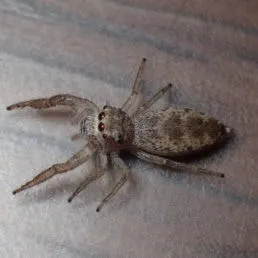
Although true tarantulas aren’t found in Virginia, understanding their key features helps in identifying similar-looking spiders. Tarantulas are large, hairy spiders with robust bodies and long legs. They typically have two claws at the end of each leg and eight eyes arranged in two rows. Their coloration varies, ranging from brown and black to shades of gray. They are known for their relatively long lifespans, with females living for several years. They are primarily nocturnal hunters, ambushing their prey. While tarantulas are intimidating in appearance, they are generally not aggressive and only bite if provoked. Knowing these characteristics can help you differentiate tarantula-like spiders from actual tarantulas found elsewhere.
Common Tarantula-like Spiders in Virginia
Several spider species in Virginia might be mistaken for tarantulas due to their size, hairiness, or general appearance. These spiders play crucial roles in controlling insect populations. Wolf spiders and fishing spiders, are among the most commonly misidentified. These spiders may be larger than many other species and have a somewhat similar leg span to that of some tarantula species. However, understanding their differences is vital for accurate identification. This section highlights some common Virginia spiders resembling tarantulas and provides insights into their distinct characteristics.
Wolf Spiders
Wolf spiders are often mistaken for tarantulas due to their size and hairy appearance. They are ground-dwelling hunters that actively pursue their prey rather than building webs. Wolf spiders are typically brown or gray, with distinctive markings on their bodies. They have excellent eyesight, allowing them to detect movement from a distance. Females carry their egg sacs attached to their spinnerets and, after the spiderlings hatch, they carry them on their backs. Their solitary lifestyle and hunting behavior make them formidable predators, contributing to the natural control of insect populations. Wolf spiders, though large and sometimes intimidating, are generally harmless to humans.
Size and Appearance
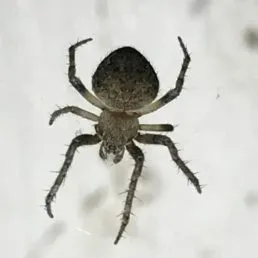
Wolf spiders in Virginia can range in size, with some reaching up to an inch or more in body length. Their bodies are covered in dense hairs, giving them a fuzzy appearance. They typically have a brownish or grayish coloration, with patterns of stripes or markings on their cephalothorax (the fused head and thorax) and abdomen. Their legs are long and strong, allowing for quick movement. The combination of their size, hairy appearance, and coloration often leads to their misidentification as tarantulas. Accurate identification involves close examination of their eye arrangement and hunting behaviors.
Habitat and Behavior
Wolf spiders are commonly found in a variety of habitats, including grasslands, forests, and gardens. They prefer areas with dense ground cover where they can hunt and hide. Unlike many spiders, wolf spiders do not build webs to catch prey. Instead, they actively hunt, ambushing insects and other small creatures. They are most active at night, using their excellent eyesight to locate their prey. Female wolf spiders carry their egg sacs attached to their spinnerets, and after the eggs hatch, the spiderlings ride on the mother’s back for a period. This unique behavior distinguishes them from many other spider species.
Fishing Spiders
Fishing spiders are another group of large spiders that can resemble tarantulas. They are semi-aquatic spiders, often found near bodies of water. Fishing spiders are larger than wolf spiders, and have a distinctive appearance. They have long legs and can run across the surface of water. Their ability to hunt both on land and in water makes them unique among spiders. While they can deliver a painful bite, they are not considered dangerous to humans. Their presence indicates a healthy aquatic environment, as they feed on insects and small aquatic creatures.
Physical Features
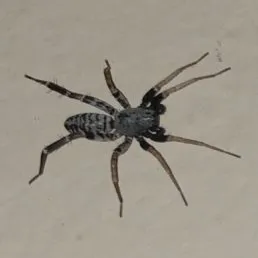
Fishing spiders have a robust build and are typically brown or gray. They possess long legs that allow them to move swiftly across water surfaces. They have a characteristic eye arrangement that helps them detect prey. Their bodies are covered in fine hairs that aid in water repulsion. Their large size and hairy appearance contribute to their resemblance to tarantulas. Fishing spiders are excellent swimmers and can stay submerged for extended periods. Understanding their physical features can help with identifying them correctly and distinguishing them from other spider species.
Where They Live
Fishing spiders inhabit a variety of aquatic and semi-aquatic habitats, including streams, ponds, and marshes. They are often found on rocks, vegetation, and other structures near water bodies. These spiders are well-adapted to their environment, with their long legs and hydrophobic hairs allowing them to move easily on the water’s surface. They are adept hunters, preying on insects, small fish, and tadpoles. Look for them along the edges of waterways, especially during the warmer months. Recognizing their preferred habitats makes it easier to spot these fascinating spiders.
Other Tarantula Look-Alikes
Besides wolf spiders and fishing spiders, other spider species in Virginia can also be mistaken for tarantulas, though less frequently. These spiders are generally smaller than wolf and fishing spiders, but certain features may lead to confusion. Understanding the characteristics of these species is essential for accurate identification. In most cases, these spiders are harmless, and their presence indicates a healthy ecosystem. Proper identification promotes a better appreciation for the diversity of spider species in Virginia.
Grass Spiders

Grass spiders are common in Virginia and build funnel-shaped webs in grassy areas. They are medium-sized spiders with long spinnerets and distinctive markings. Their webs are often mistaken for those of other spiders. Grass spiders are active hunters and can be found throughout the state. They are not dangerous and are an essential part of the ecosystem.
Cellar Spiders
Cellar spiders, also known as daddy longlegs, are common in homes and other sheltered locations. They have long, thin legs and small bodies. While they might appear intimidating due to their appearance, they are harmless to humans. Cellar spiders feed on insects and other spiders, playing a role in pest control. They are easy to identify due to their unique appearance and habit of hanging upside down.
Tips for Spotting and Identifying Spiders
Spotting and identifying spiders requires patience and keen observation skills. Knowing where to look, when to observe, and what resources to use can significantly improve your chances of successfully identifying these creatures. Here are some tips to help you spot and identify Virginia spiders, including those that resemble tarantulas.
Where to Look

Spiders can be found in various habitats, each offering different opportunities for observation. Wolf spiders are often found on the ground, under rocks, or in dense vegetation. Fishing spiders are near water bodies, along the banks of streams, ponds, and marshes. Look for webs or signs of activity. In addition, grass spiders are often found in grassy areas. Cellar spiders are common in basements, garages, and other sheltered locations. Consider looking in these locations to increase your chances of encountering different spider species.
Best Times for Observation
The best time to observe spiders varies depending on the species and its activity patterns. Many spiders, particularly wolf spiders, are most active at night. Using a flashlight can help you find them when hunting. Fishing spiders are often visible during the day, especially when they are actively hunting or resting on the water’s surface. Web-building spiders can be observed at any time, but their webs may be easier to spot in the early morning when they are covered in dew. Planning your observations at the most optimal times can increase your chances of seeing spiders and their behaviors.
Using Field Guides and Resources
Field guides and online resources are invaluable tools for identifying spiders. There are numerous field guides specializing in arachnids, providing detailed descriptions and images of various spider species. Online databases and websites offer additional resources, including photos, distribution maps, and information on spider behavior. Learning how to use these resources effectively can significantly improve your identification skills. When using field guides, compare the spider’s physical characteristics and habitat with the descriptions in the guide. Using multiple resources can increase the accuracy of your identification.
Safety Precautions when Encountering Spiders
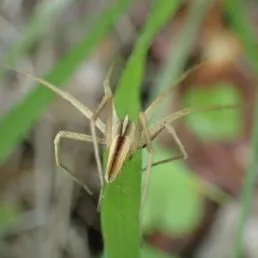
While most spiders in Virginia are harmless, it is crucial to take precautions when encountering them to avoid bites and potential reactions. Understanding spider behavior and knowing when to seek medical attention can help you stay safe. Here are some safety tips for encountering spiders in Virginia.
Avoiding Bites and Reactions
The best way to avoid spider bites is to avoid contact. Wear long sleeves, long pants, and gloves when working outdoors, especially in areas where spiders are likely to be present. Avoid reaching into dark corners, under rocks, or into piles of leaves where spiders may be hiding. Inspect clothing and shoes before putting them on, and shake out any items that have been stored in areas where spiders may be present. If you are bitten by a spider, wash the area with soap and water and apply a cold compress to reduce swelling. Over-the-counter pain relievers can help manage any discomfort.
When to Seek Medical Attention
Most spider bites in Virginia cause only mild symptoms, such as redness, swelling, and itching. However, it is important to seek medical attention if you experience severe symptoms. If you experience difficulty breathing, chest pain, or severe muscle cramps, seek immediate medical care. Watch for signs of an allergic reaction, such as hives, swelling, or difficulty swallowing. Any severe symptoms or concerns should be evaluated by a healthcare professional. Prompt medical attention can help prevent complications from spider bites.
The Importance of Spider Identification

Accurate spider identification is essential for several reasons. Firstly, it allows you to appreciate the diversity of spider species and their roles in the ecosystem. Secondly, it helps prevent unnecessary fear and anxiety about spiders, as most species are harmless. Furthermore, knowing the identification of spiders helps determine which species are venomous and the appropriate response if a bite occurs. By learning to identify spiders, you can develop a greater understanding and respect for these fascinating creatures. Spider identification is a valuable skill, enhancing your appreciation of the natural world. This also leads to a more informed approach to pest management and conservation efforts.
